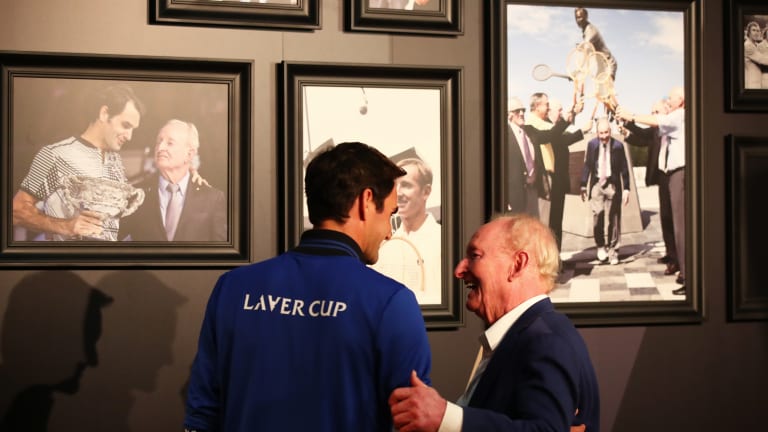On his birthday, Rod Laver prefers to celebrate his mates
By Aug 09, 2020Madrid, Spain
Aryna Sabalenka chased Elena Rybakina for three sets, before winning a photo-finish tiebreaker in Madrid
By May 03, 2024Lifestyle
The Tennis Traveler: Top 5 things to do in Rome
By May 02, 2024Madrid, Spain
Aryna Sabalenka storms back against Elena Rybakina for Madrid final rematch with Swiatek
By May 02, 2024Madrid, Spain
Iga Swiatek returns to Madrid Open final by beating Madison Keys, Daniil Medvedev retires in quarterfinal with injury
By May 02, 2024Madrid, Spain
Jiri Lehecka through to Madrid semifinals after Daniil Medvedev retires with injury
By May 02, 2024Pop Culture
Billie Jean King gets the Breakfast of Champions treatment, set to appear on a Wheaties box
By May 02, 2024Madrid, Spain
Iga Swiatek sails past Madison Keys, scores second straight Madrid final
By May 02, 2024Your Game
Is tennis feeling the Challengers effect? Searches for "adult tennis lessons" are up 245%
By May 02, 2024Pick of the Day
Jiri Lehecka vs. Daniil Medvedev, Mutua Madrid Open
By May 02, 2024On his birthday, Rod Laver prefers to celebrate his mates
The Australian, who won an unprecedented two Calendar-Year Grand Slams in his legendary career, turned 82 years old on Sunday.
Published Aug 09, 2020
Advertising

On his birthday, Rod Laver prefers to celebrate his mates
© Julian Finney/Getty Images
Advertising

On his birthday, Rod Laver prefers to celebrate his mates